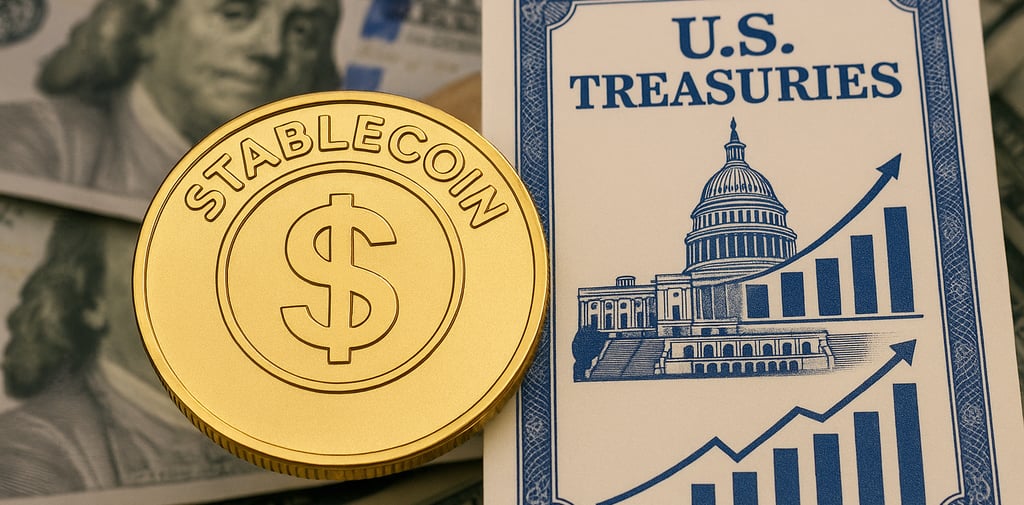How Stablecoins Move Billions into U.S. Treasuries — and Why It Matters for Investors
Discover how the top three stablecoins by market cap channel massive funds into U.S. Treasuries, how this reinforces stability and impacts global markets.
GUIDES
8/11/20252 min read


Stablecoins have evolved from simple dollar-pegged digital tokens into major players in global finance. Today, the issuers of the largest stablecoins are significant buyers of U.S. Treasuries, using interest earned as a key revenue source. This practice enhances stability, strengthens redemption capacity, and positions stablecoin issuers alongside institutional investors in the bond market.
Top Three Stablecoins by Market Cap
According to CoinMarketCap (mid-2025), the largest stablecoins are:
Tether (USDT) — Market cap: ~$159 billion
USD Coin (USDC) — Market cap: ~$63 billion
Dai (DAI) — Market cap: ~$5.37 billion
These rankings reflect dominance in volume, liquidity, and reserves — a key factor in their market stability.
How U.S. Treasuries Support Stablecoin Stability
Stablecoin issuers invest reserve funds in short-term U.S. Treasury bills — highly liquid and low-risk assets.
Tether alone invests over $127 billion in Treasuries (including T-bills and repurchase agreements).
Combined, Tether, Circle, and MakerDAO now hold over $182 billion in U.S. debt — more than some nation-states.
This treasury-backed reserve model ensures that redemptions remain reliable, even during crypto market turmoil.
Tether’s Market Share Impact on Treasury Yields
A recent academic study found:
By Q1 2025, Tether held $98.5 billion in U.S. Treasury bills — about 1.6% of all outstanding T-bills.
A 1% increase in Tether’s market share corresponded to a drop of 14–16 basis points in 1-month yields.
This impact equates to roughly $15 billion in annual interest savings for the U.S. government.
In other words, stablecoins are now a macroeconomic force in the U.S. debt market.
Investor Takeaways
Revenue via yield — Users don’t earn interest directly, but issuers use it to strengthen operations and maintain user confidence.
Global market stability — Treasuries ensure liquidity and redemption reliability.
Macro influence — Stablecoin demand lowers yields, indirectly helping U.S. borrowing costs.
Risks, Opportunities, and the Road Ahead
While the integration of stablecoin reserves into U.S. Treasuries brings liquidity, stability, and yield, it also introduces concentration and policy risks.
Regulatory exposure: U.S. legislation or global compliance rules could alter how reserves are managed.
Market liquidity dependency: Heavy reliance on Treasury markets ties stablecoin stability to U.S. fiscal and monetary policy.
Operational transparency: Audits and disclosures must remain consistent to maintain trust.
For investors, the takeaway is simple: understand the reserve mechanics before holding or trading stablecoins. This sector is evolving rapidly, and what seems safe today could shift with new regulations or market shocks.
At The Blockchain In, we track these developments in real-time — from macro impacts to crypto-native risks — helping you stay ahead in a market where information speed equals opportunity.
The Blockchain In
Guides, news, analysis, and investment tips on cryptocurrencies and blockchain.
CONTACT and partnership
Let us know about your experience here
hello@theblockchainin.com
© 2025. All rights reserved. Privacy Policy | Terms and Conditions | Cookie Policy | Disclaimer
about us
About
Contact